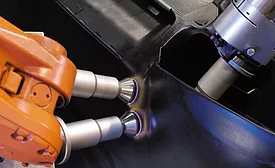Home » Keywords: » volatile organic compounds (VOCs)
Items Tagged with 'volatile organic compounds (VOCs)'
ARTICLES
Sustainability Practices in Pressure-Sensitive Adhesive Manufacturing
While challenges remain, the benefits of sustainable practices make a compelling case for the transition toward more eco-friendly adhesive manufacturing.
September 17, 2024
Replacing Materials of Concern
Adhesives, sealants, and coatings companies should have a robust protocol in place for determining the optimal replacements for materials of concern.
November 22, 2023
Sustainable Material Pretreatment and Activation Solutions for Adhesives and Sealants
Plasma technology offers environmentally responsible surface pretreatment while reducing VOC and CO2 emissions.
November 9, 2023
Keep the info flowing with our newsletters!
Get the latest industry updates tailored your way.
JOIN TODAY!Copyright ©2025. All Rights Reserved BNP Media.
Design, CMS, Hosting & Web Development :: ePublishing


.webp?height=168&t=1709670950&width=275)


.webp?height=168&t=1704834340&width=275)



